#zyl update
Explore tagged Tumblr posts
Text
six sentences sunday
The slack, peaceful expression of Zhao Yunlan asleep, his body curled toward the main room. That instinctive way he reached for Shen Wei, patting along his shoulder for his forearm, for his wrist. Even just earlier that night, sitting in companionable quiet on the couch, Zhao Yunlan’s hand tapping along the leather until it found Shen Wei’s ankle and settled there, skin against skin. As if Zhao Yunlan had gotten used to it too, touching. Their bodies as close as their lives were tangled now. Shen Wei would miss every piece of it.
haha. hurting my own feelings in the down draft of the answer fic! i was initially worried i wouldn't have enough thoughts about that gap between the knife scene and the next scene to write a whole fic about it, but it's starting to seem that the solution is simply: cramming in as much domestic weilan flashback as narratively possible :3
#weilan#shen wei#zhao yunlan#guardian#guardian bonus bingo 2024 prompt 5#zhen hun#my fic#six sentence saturday#WHEW long time since i had an update post haha. long time since i had time to actually draft something that wasn't fic that needed to be#posted in the next like. four days LMAO#weirdly enough this feels like the corallary fic to summer feeling#the emotional premise is very different. and also zyl is ... not really onscreen ever in the fic haha. but they feel the same to me somehow#its nice omg. i set this prompt response to be so easy for me: constrained by canon events. clear start and end. modern canon weilan#NO WORLDBUILDING NEEDED. WHAT A RELIEF LMAO#ngl i am sooooooooo glad to not be fumbling around making up just enough yohe worldbuilding to prop a fic up#being able to have shen wei do something normal like. close a door. GLORIOUS i tell you. GLORIOUS
21 notes
·
View notes
Text

X'vahl x Erenville [Erenvahl] Extras (ongoing)
Extras and one-off shots and gpose sets taking place in and around Dawntrail MSQ. Basically it might be canon to their storyline, it might not, but either way it isn't part of the linear plot.
[1] || [2] (18+) || [3] || [4] || [5] (18+) || [6] || [7] || [8] (18+ish) || [9] || [10] ||[11] || [12] (18+) || [13] || [14] || [15] || [16] || [17] (18+) || [18] || [19] || [20] || [21] || [22] || [23] || [24] || [25] || [26] || [27] || [28] || [29] || [30] || [31]
[Endwalker Storyline] || [Endwalker Extras] || [Dawntrail Storyline]
Zyl's notes:
Yeahhhhh baby, this has some of my all-time favorite gpose shots I've ever taken! With me getting way more comfortable with gpose, and Dawntrail bringing the graphical update along with so many new bones for posing, I was having so much fun! But I'm not finished yet of course! I may eventually need to make a part 2 to this post since we haven't even hit 7.2 and I'm already at 30. OTL
7 notes
·
View notes
Text
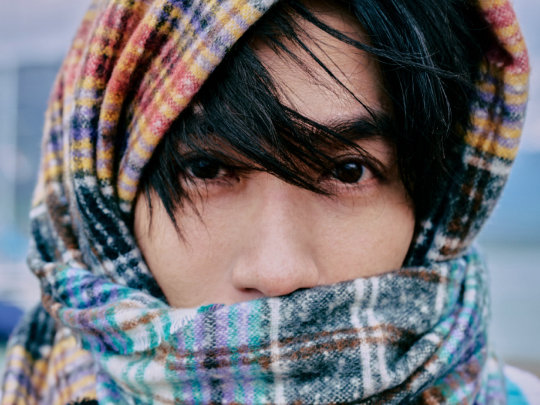
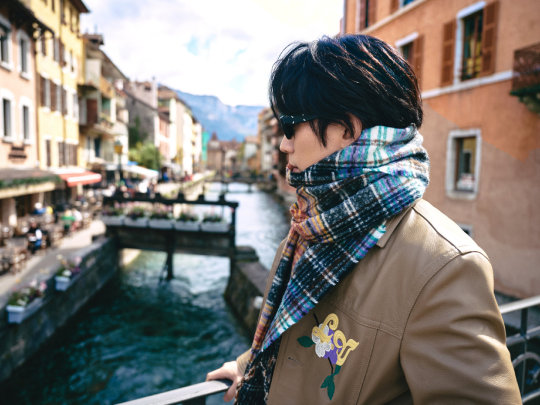

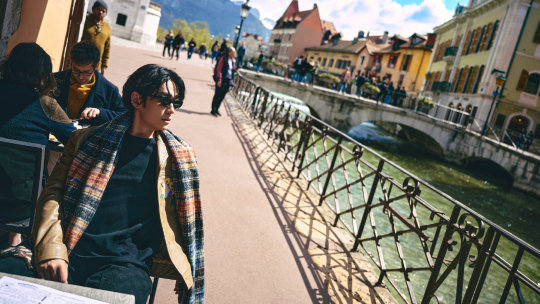
Zhu YiLóng 朱一龍
Little tour in Annecy, Geneva and around the lake. (2/3)
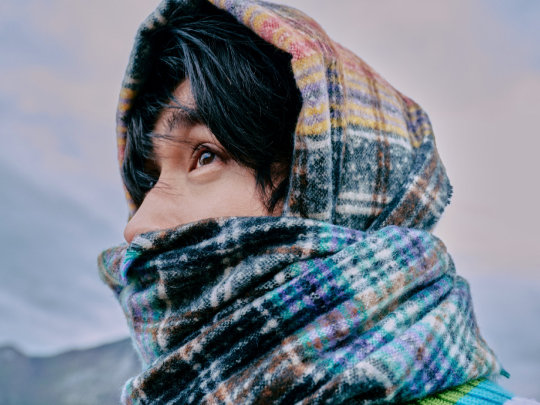





ZYL Studio Wb updates 2024.04.15,16
04.16 Happy birthday!!!
#zhu yilong#chinese actors#dmbj cast#the lost tomb cast#reunion the sound of the providence#guardian#lost in the stars#the rebel#lighting up the stars#the story of minglan#to dear myself#cdrama#if I wasn't broke and on deficit of spoons#I'd jump on a train there#it's like... barely an hour away
19 notes
·
View notes
Text
Guardian Bonus Bingo: Swelter
Sliding in under the wire for @guardianbingo prompt "swelter" (posted late because I was out of the country and my return flight got canceled, so I got home a day later than planned).
This is a scene for the ever-growing monolith Picture Imperfect, my Alternate First Meeting YOHE fic which has now snowballed to well into six figures 😅 because I absolutely can't keep a plot simple to save my word count. Although the story premise itself was inspired by a 2023 Guardian Bingo prompt, I've added more than 30 chapters and 100K words since writing the initial treatment, so I think it's fair to work new prompts into various additional chapters where appropriate. (I'm just trying to get a few more things cleaned up before I start posting regularly so I don't have to take long breaks between updates. It's really coming, I promise!)
In this story, ZYL falls into the past at a slightly different point, and though Fu You and Ma Gui trust him, Hei Pao Shi is convinced that "Kunlun" is an enemy spy (among other things). Despite his suspicions, the two are ordered to work together on a mission behind enemy lines. They are en route when this scene occurs.
--------------------------------------
Their journey continued uninterrupted—and largely unbroken by speech, though Zhao Yunlan made an effort every so often—until they came within view of a rutted wagon track the following afternoon. Hei Pao Shi glanced up and down the road, scanning for travelers, and seemed about to continue on their way when Zhao Yunlan called, “Hold up a minute.”
Hei Pao Shi glanced back to where he’d stopped, but said nothing.
Zhao Yunlan planted his hands on his hips and stretched his back, which ached as though an elephant had been sitting on it. “Look, I’m as athletic as the next guy, but we’ve been marching since daybreak, and I’m not used to going this many kilo—er, li on an empty stomach. Why don’t we stop for a minute and have something to eat and drink?” He pointed to a few stunted trees growing a short distance away. “There’s a little shade here, and from the look of the landscape up ahead, it’s going to be the last break from the sun we have for a while.”
Hei Pao Shi hesitated, but Zhao Yunlan knew he wouldn’t need to press hard to get his way. Hei Pao Shi had thrown his hood off long before the sun had reached its zenith, and Zhao Yunlan had glimpsed the sheen of sweat on the lower half of his face whenever they had been walking abreast. Although he had never broken pace, the layers of black leather and fabric had to be suffocating under the sun’s steady rays. Even Zhao Yunlan, who had so little body fat that he routinely layered long sleeves with vests or jackets to insulate himself from summer air conditioning, had shoved the fur collar into the top of his pack hours before and tugged the front of his robes open halfway to his navel. It might be slightly indecent for the times, but it wasn’t like there were any young ladies around to be scandalized. Just Shen Wei—and considering how often he’d helped Zhao Yunlan bathe and dress during his time of blindness, he hardly counted anymore.
Not that this Shen Wei had ever seen Zhao Yunlan without a shirt, but still. Communal bathing existed in this era, didn’t it? Though he doubted there were many public bathhouses operating in a society that had nearly been destroyed by a catastrophic meteor impact…
While Zhao Yunlan mused about standards of propriety, Hei Pao Shi evidently came to a decision and marched off toward the cluster of trees. Zhao Yunlan hurried after, only to find that the shelter offered by the spindly grove was hardly worthy to be called shade. Sun dappled the hard-baked earth between the trees, whose leaves were too ragged and sparse to block it out.
“Well, I guess it’s still better than out there,” Zhao Yunlan sighed, swinging his pack to the ground. His clothes where the pack had rested were sticky with perspiration, and he divested himself of his belt and shoulder holster so he could peel the layers of fabric off his skin and let them dry a little.
Across the patch of shade, Hei Pao Shi had his head tilted back to drink from his waterskin. His exposed neck was flushed and damp, and sweat glued strands of hair to his skin. “Xiao Hei, you’re going to sweat all that water out before we even make it back to the road,” Zhao Yunlan observed. “Why don’t you take some of that off?”
Hei Pao Shi glanced over, still drinking, and nearly choked when he saw Zhao Yunlan stripped to the waist. He coughed for a good ten seconds before he managed to sputter, “Take what off?”
Zhao Yunlan blinked at him in unconcealed surprise. He hadn’t banked on the sight of his body horrifying Shen Wei—he’d set that aside for his ego to unpack later—but for the first time, Hei Pao Shi had spoken to him without open disdain, apparently shocked into forgetting how much he hated “Kunlun.” He hadn’t even noticed the Xiao Hei, and Zhao Yunlan had expected some kickback on that one.
It was progress, of a sort.
#my writing#guardian bonus bingo#zhen hun#fanfiction excerpt#picture imperfect#this is mostly first draft content and may change in the final edit
7 notes
·
View notes
Text
By: Jaco van Zyl
Published: Sept 2, 2021
The increased popularity of Critical Social Justice Theory (CSJT, commonly referred to as Woke ideology) and the different ways in which it manifests in academia, the media, politics, and private life necessitate not only a historical analysis of its evolution but also a psychological formulation thereof, based on adherents’ behavior, affective states, and what they reveal about their interpretation of the world today. The historical development of Critical Social Justice Theory in its current form has been well established thanks to the research by James Lindsey, Helen Pluckrose, and Peter Boghossian. This developmental map describes the historical moments and philosophical checkpoints that ultimately led to CSJT, as it is applied today. In addition to its purely philosophical roots, there is a psychological structure underlying this worldview that requires certain psychological processes and intrapersonal dynamics on the part of its adherents for the ideology to be maintained, updated, and propagated. This article explores these processes.
Key Features of the Critical Social Justice Worldview
In their 2018 book The Coddling of the American Mind, Greg Lukianoff and Jonathan Haidt categorize social activism into two types of worldviews, namely common-humanity identity politics and common-enemy identity politics. The former describes a type of social religion where the well-being of all humans is prioritized based on shared human values and common goals. It is a “social religion,” where all humans are equally included, and members of society are often referred to in familial terms. Historically, common-humanity identity politics has aimed to unite and harmonize racial, gender, and other strata of American life—and not to destroy, “dismantle,” or “cancel” any cultural artifacts of American heritage. The latter worldview, however, endorses a value system where an ever-growing list of aspects in American society are identified as “problematic” and consequently deserving of destruction. People who live by this worldview are vigilant and alert, ready to identify an enemy: a historical figure, an academic subject, language use, religious doctrine, a specific religion, a tradition, or a demographic based on immutable properties (gender, race, sexual orientation, ethnicity, etc.).
The common-enemy position has a well-established equivalence in psychology. Dividing people and human artifacts into all-bad or all-good categories is a basic feature of the Woke worldview. By virtue of a person’s immutable features, he is assigned a group-identity and is either classified as belonging to the evil oppressor class, the common enemy that needs to be exposed, humiliated, and cancelled or the virtuous, innocent victim class that deserves emancipation and social justice. To the Woke, the individual gets superseded by the group classification from which he cannot escape. Broadly, the categories carrying historical and current culpability include the categories of male, white, heterosexual, and able-bodied. Alternatively, categories carrying historical and current victimhood and moral innocence include the categories female, black/people of color, LGBTQ+ and disabled. This worldview in which every individual is classed as either all-bad or all-good actualizes a defense called splitting. Splitting is a primitive defence of young infants and in character constellations of some adults according to which people are either seen as purely evil and hostile, or purely innocent and loving.
Within this split worldview, certain qualities are attributed to the Other, including feelings, intentions, wishes, and character traits. The attribution of such mental and character traits onto someone else can be described as the defence mechanism known as projection. Prejudice of any kind (be that sexism, racism, homophobia, transphobia, ageism, ableism, etc.) may be seen as the result of people projecting hostile aspects to whole groups of people. Once this split worldview has been established, guilt and innocence of the role players within every incident are determined by gender, race, or sexual orientation. Critical Social Justice Theory does not ask whether racism or sexism or homophobia took place; it assumes that it inevitably did:
“The question is not ‘did racism take place’? but rather ‘how did racism manifest in that situation?'”
An appropriate question here may be framed as: “Where do the feelings, intentions, wishes, or character traits projected upon the other originate?”
There is no better a person to answer this question than the author of the Woke text White Fragility herself, Robin DiAngelo:
“I was invited to the retirement party of a white friend. The party was a pot-luck picnic held in a public park. As I walked down the slope toward the picnic shelters, I noticed two parties going on side by side. One gathering was primarily composed of white people, and the other appeared to be all black people. I experienced a sense of disequilibrium as I approached and had to choose which party was my friend’s. I felt a mild sense of anxiety as I considered that I might have to enter the all-black group, then mild relief as I realized that my friend was in the other group. This relief was amplified as I thought that I might have mistakenly walked over to the black party!
Patrick Rosal writes poignantly about the pain of being mistaken for the help at a black-tie event celebrating National Book Award winners…I have made this assumption myself when I have been unable to hide my surprise that the black man is the school principal or when I ask a Latinx woman kneeling in her garden if this is her home.”
The above admissions of her own prejudice assumed to be universal experience of all white people demonstrates the projection defenses CSJT adherents employ in their categorization of perceived oppression in each encounter. It is the contention of this piece that the feelings, intentions, wishes, or character traits projected to the Other originate with the person himself. These can be devaluing projections or idealizing projections (concordant with the primitive split into all-good and all-bad objects). With devaluing projections, aspects of the person they find internally intolerable, repudiating, or immoral within themselves get projected onto the bad object. Engaging the devalued Other with projected parts of themselves gives such individuals a greater sense of control over the otherwise intolerable aspects present yet denied within themselves. Often, those who employ this defensive splitting and projecting of bad aspects of themselves to the devalued Other, oftentimes manifest the exact type of projected characteristics themselves.
In contrast with devaluation and dehumanization of the Oppressor, the victimized Other is necessarily endowed with the opposite: all-good status of innocence, virtue, moral privilege, heroism, and essential purity. What is noteworthy is that some of the most passionate and devoted adherents of CSJT are also the most privileged elite of society. It seems that a vast number of these adherents belong to the category of white, often male, and heterosexual, frequently occupying prominent corporate, teaching, celebrity, or political positions, and belonging to middle- to upper-class households, having graduated from privileged schools and colleges, with concomitant great social influence, thus corresponding to CSJT’s definition of unearned privilege thanks to a most unjust, racist, and oppressive system. It is, therefore, logical to conclude that guilt about their shared perpetration of oppression may be too intolerable to bear. This anguish is solved in two ways:
By projecting the guilt onto non-adhering members of the same devalued category, pointing out the racism in others, resorting to call-out and cancellation campaigns, and terrorizing individuals suspected of non-adherence (which is tantamount to endorsing racism) online, in the media, and especially before the suspected perpetrator’s employer.
By employing a defense called identification with the victim, they act as allies to victimized minorities, describing themselves in self-deprecating terms, confessing their own racism and oppression, and vowing to commit to the Woke cause of dismantling systemically oppressive racist, sexist, homophobic, and transphobic systems. This allyship may, in fact, be described as a conscious or subconscious strategy to rid oneself of one’s own sense of complicity in the believed perpetration of oppression, by demonizing the devalued Other and, thus, camouflaging oneself through self-debasement and virtue-signaling behavior.
A further appeal for such passionate endorsement of the CSJT comes from the social incentives. In the media, in centers of higher education, as the ethos of many corporations, at museums, in demonstrations by sports stars, at social events, and in the public statements by celebrities and artists, CSJT is framed as the moral goal of society—a new social religion. Not only is this worldview presented as morally superior to currently competing alternatives, but there is also a sense of prestige attached to it by virtue of the status associated with society’s trailblazers of trends—a Thorstein Veblen Theory of trendy morality. Through narrative saturation in the media, the appearance of consensus, fear of ostracization, and association with what is prestigious, classy, and trendy, a moral ideal is created: A mass movement has been formed consisting of individuals of apparently one mind, striving toward the same indisputable and prestigious ideal. In his 1921 volume, Group Psychology and the Analysis of the Ego, Sigmund Freud expounded on the idea that everyone identifies with a parent, teacher, or other admired figure, according to which certain personal goals for the future are set. In committing to these goals, the individual makes certain sacrifices, while feeling motivated by the imaginary pleasure he would enjoy from attaining these goals. In addition to identifying with the victim as an object of sympathy, the subject is also seduced into identifying with the idealized object (admired celebrities, artists, athletes, etc.) endorsing a worldview portrayed as morally prestigious. In doing so, the adherent to the CSJT enjoys the comfort of moral bliss, a sense of triumph, and the enhancement of self-esteem.
This state can only be maintained for as long as the all-good versus all-bad split is maintained. Psychologically, this is a much simpler maneuver compared to a more difficult alternative: namely, to tolerate ambivalence. It may be more bearable to condemn whole demographics, whole cultures, and whole histories as all-evil on the grounds of the despised aspects of such persons and their artifacts (also called part-object representation) than to deal with the complexities of appreciating that people of all races, genders, sexual orientations, histories, and cultures consist of both positive and negative aspects to various degrees (i.e., whole object representation).
CSJT ensures the maintenance of the psychic split in various ways. The assigning of privilege and perpetration, on the one hand, and disadvantage and moral purity, on the other, is not based on alterable factors but on static, immutable characteristics framed in totally offensive terms. One does not and might never hear of authoritative-parenthood privilege; addiction-free household privilege; disease-free childhood privilege; or early-trauma-free privilege; nuclear family privilege. These categories (whose correlations with improved development into adulthood have been confirmed) would weaken the split between unchangeable categories and turn it into a more workable framework in which those concerned with social justice could work. Adherents of the Woke worldview disallow this more complex approach to social issues (psychologically, an ambivalent position) and, instead, succumb to the simplistic and often pleasurable permission to demonize entire categories of people according to immutable traits.
Adherents of the CSJT also have a conspicuous relationship with world history. Central to their worldview, historical research, as recounted by the oppressor (heterosexual white male), cannot be trusted and merely perpetuates oppression and hate. In response, the Woke engage in a process of historical revisionism, applying the principles of postmodernism (evidence has no objective value, only subjective benefit) and cultural Marxism (oppressor-victim dichotomy along racial, gender, sexual orientation, and other categories) as their methodology to arrive at preferred, predetermined conclusions. Therefore, the white heterosexual male is an evil oppressor, and the minority class is the tragic hero. Historical empathy, or the ability to appreciate the complex reality of history, is no longer applied. Instead, history is used to remind one of the oppressor class’ inherent evil. Whatever can be said of the historical white male may also be claimed of the white heterosexual male today: He is greedy, oppressive, violent, unjust, and immoral. Since the past is also present in the CSJT worldview, historical culpability is also present culpability. To the Woke, history does not exist as history; history is current, and representatives of history are to be judged according to today’s moral values (also called, presentism).
A fundamental flaw in the CSJT worldview of history is that it cannot adequately account for the historical record when white nations have been the victims of defeat and oppression. These include the enslavement of Europeans by North African and Middle Eastern nations as well as by other European nations. Similarly, the Woke switch strategy is applied when presented with well-documented history involving the imperialism, warfare, genocide, and enslavement of Native American and African tribes by other Native American and African tribes. Shaka Zulu, the warrior king of the Zulus in the 19th century, displaced Jele, AmaHlubi, Swati, Matebele, and Makololo people who settled in other regions in Southern Africa, or were assimilated into other tribes. Similarly, the Trans-Saharan Slave Trade involved non-European tribal warlords like Tippu Tip of East Africa and others who participated in the oppressionof other non-European subjects. Whole kingdoms like the Hausa and Igbo Empires of Nigeria flourished during the Trans-Saharan Slave Trade and virtually collapsed when Napoleon brought it to an end. History reflects the complexity of human society in which moral judgments can hardly be made in black-and-white (or all-good versus all-bad) fashion. Current research has not found an application of CSJ doctrine implicating non-European nations in a social matrix of oppressor and oppressed demographics.
Tangential to the CSJT worldview is the strategy employed when current social affairs are reported. Politicians, Big Tech companies, university lecturers, and legacy media resort to narrative selection and narrative saturation by creating a perception of today’s world that closely resembles the CSJT “reality.” The aim appears to be the manipulation of the listener’s perception of social reality, heightened selective awareness of incidents, and perceptual blindness to aspects of reality which do not fit into this precise narrative. This narrative follows the same split in which members of all-bad object-categories are pre-emptively devalued and rendered culpable as the oppressor, and members of the all-good object-categories are overvalued as innocent and unfairly oppressed. Thus, Eric Kaufman explains:
“At the extreme, minorities are viewed as hyper-fragile children than must be protected from all harms, however microscopic or imaginary. The majority is hated and feared as a vicious predator against whom one must constantly stand on guard, and which should be attacked remorselessly.”
But contrary to the totalizing narrative, the latest evidence shows a significantly more complex picture in terms of:
The income gap among ethnicities and genders in the United States
Hate crime statistics in the United States
Police brutality in the United States
State of suffering (as opposed to comfortable privilege) facing men
According to Kaufman, this selective maneuvering by CSJT adherents in dealing with historical and social information reveals a concerted effort to perpetuate a social narrative in which the evil white male-dominated West is in toto responsible for the oppression and suffering of the innocent, noble, morally pure victim classes—not only historically, but also presently.
What follows from this? CSJT adherents are clear: Through a process called problematizing, every aspect of European/Western society is to be combed to make visible its inherent oppressiveness. CSJT provides the doctrinal blueprint for how evil Western society is, and every single aspect of society should be interpreted accordingly to confirm its inherent evil. In this process of dismantling all traces of “whiteness” or of the “hegemony of heteronormativity” from Western society, nothing escapes the devaluing gaze of the CSJT activist. Dismantling is a euphemism for destruction, and the moral rationale for this is due to Western society’s inherent badness. DiAngelo herself writes:
“There are many approaches to antiracist work; one of them is to try to develop a positive white identity. Those who promote this approach often suggest we develop this positive identity by reclaiming the cultural heritage that was lost during assimilation into whiteness for European ethnics. However, a positive white identity is an impossible goal. White identity is inherently racist; white people do not exist outside the system of white supremacy…Rather, I strive to be ‘less white.’”
No credit is given to Western society as the locus of the Enlightenment, and the same standard of blanket disqualification is not consistently applied to other cultural groupings. CSJT adherents have demonstrated their disgust for the West, problematizing everything from Shakespeare and Beethoven to mathematics and science. The above excerpt is a clear admission that ambivalence cannot be endured; that there can only be one approach to dealing with Western society, and that is to dismantle it. Anything softer than that would be accommodation (also referred to as maintaining the status quo). Just as splitting into immutable categories ensures that the split is immutably secured, stating that non-racism can never be achieved ensures that dismantling is an endless process: There will always be something more to destroy. To those familiar with psychodynamic theory, this final defense of actively engaging in violating and spoiling even cherished (socially idealized) aspects of Western society is a defensive constellation called pathological envy.
In 1957, the British psychoanalyst Melanie Klein published her ultimate work Envy and Gratitude, in which she meticulously maps out the infant dynamics of greed (or appetite for pleasure), envy, and jealousy. She describes the conditions under which these dynamics result in pathological envy in adulthood and, conversely, how resolution results in gratitude and creativity. In this paper, she describes primal envy as “the angry feeling that another person possesses and enjoys something desirable—the envious impulse being to take it away or to spoil it.” Due to the frustration of not getting their desires satisfied, the subject projects destructive impulses into the Other, who is perceived to be withholding what the subject desires. Excessive envy is accompanied by excessively destructive and spoiling impulses. Once the admired/idealized Other has been devalued (even irrevocably destroyed), it is difficult for the subject to regard this spoiled object as valuable and obtainable again. The ultimate loss of the once-idealized Other leads to gratitude impairment.
Persons who have character constellations dominated by envy come across as bitter, demanding, entitled, insatiably dissatisfied, critical, nonreceptive to compliments, pessimistic, and aggressive. Since relief from frustration is obtained from destroying the envied object, the satisfaction of gratitude is not achieved. Instead, the pleasure from devaluation and sadistic spoiling of coveted resources (to the Woke: privilege, power, and normativity) becomes irresistible. The subject also enjoys the bliss of self-idealization as it is no longer subjected to the limitations, criticism, and judgment of the now-devalued Other. Granting the devalued Other even the slightest bit of accommodation could result in unbearable ambivalence. Such ambivalence would threaten the narcissistic perfection of the subject and would expose him to unbearable guilt. Instead, the person resorts to splitting and devaluation, as ambivalence would remind him of the once-enjoyed valued object of which he is currently deprived due to his own destructive violation of that object.
From the CSJT perspective, what is the coveted “something” that the Other possesses and withholds that justifies the envious destruction of the Other? It is, according to Douglas Murray, among other things, power:
“[E]verything is viewed solely through the prism of ‘power.’ Of course power exists as a force in the world, but so do charity, forgiveness and love. If you were to ask most people what matters in their lives very few would say ‘power.’ Nevertheless for a certain type of person who is intent on finding blame rather than forgiveness in the world…absolutely everything in life is a political choice and a political act.”
At a collective level, adherents of CSJT and their obsession with power manifests this psychoanalytic formulation of envy observably. Every individual is capable of disgust and bitterness due to his own privately-experienced frustrations and defeats. Crowded together around a socio-political cause like CSJ and fueled by narrative-creation and saturation from legacy media outlets, such individuals can easily align their grievances and demand the utter dismantling, destruction, and violation of an imperfect yet evolving system consisting of categories of people deemed unfairly advantaged, oppressively powerful, and protective of their privilege.
The aggressive utterances by CSJT activists and their destructive behaviour toward dissidents online, on university campuses, and at places of employment, belie their self-justifying claims that they repudiate hate, intolerance, and oppression. Such behavior betrays more a burning hatred toward those perceived to be privileged than concern for those perceived to be disenfranchised.
The Future of CSJT
As explained above, CSJT is a radical worldview under which more destructive trends can be expected. From a psychodynamic perspective, the CSJT worldview drives individuals to desire a particular resource: “systemic power.” CSJT has provided for the perpetual devaluation of the Other by formulating its utter intolerance of negotiation and accommodation of anything less than a commitment to destroy (or dismantle) Western civilization. Its totalizing nature drives it to ensure that not a single aspect of society is left untouched by its dismantling commitment. The outcome will be a three-fold experience: first, the enjoyment of brute primal pleasure from destroying the envied Other, primal narcissistic bliss of moral self-idealization, and, third, unbridled access to resources (“systemic power”) on CSJT terms with severely limited reflective ability.
A worldview so voracious for power, with no capacity for self-reflection, is a recipe for totalitarianism. CSJT’s failure to usher in a worldwide ���anti-racist” utopia will not disillusion its adherents. Instead, hunger for power and the pleasure of envious destruction will greatly weaken restraint. Maintaining a de facto conviction that their own position is above all scrutiny, adherents of CSJT will scapegoat yet another devalued and oppressive Other as the reason for society’s disintegration, and the reason for Theory’s “failure” will be sought elsewhere. Theory will be elevated to scriptural status, and, as a result, it will be immune from criticism.
One extreme response to the failure of CSJT to turn the West into an “anti-racist” utopia will likely be a defensive maneuver familiar in psychoanalysis. Following Sigmund Freud’s observations in Group Psychology, devotees of radical religious and political movements identify with an external idealized individual or cause. The psychological investment into the idealized Other can be so extreme that, should the Other or their cause disappoint, devotees will much rather resort to masochism than to bear failure. It would, therefore, be no surprise if, even after the failure of CSJT to transform society into an “anti-racist” utopia, the most extreme adherents still seek a kind of heroic martyrdom in service of Theory.
Since CSJT is essentially hostile, envious, and ultimately necrophilic (destruction-oriented), what does the alternative look like from a psychodynamic perspective?
The Burden of a Complex Reality
One of the greatest psychological milestones an infant achieves is to integrate good and bad within the Other and eventually the good and bad within the self. Prior to such an achievement, it perceives the Other entirely represented by its parts: the Other as the all-good breast, or the all-good hand, or the all-bad face, and so on. Healthy psychological development involves progressing from experiencing the world within this defensive split (and projectively engaging the world within this split) to gradually realizing that the same Other contains aspects that are both good and bad.
Developmental progress is, therefore, the infant’s ability more fully to perceive and respond to reality with all its complexity. This, undoubtedly, leads to greater restraint in instinctive responses. Within the more primitive split, the infant perceives and responds instinctively with destructive aggression, or with spoiling envy, or with engulfing adoration, etc., of the Other. More developed psychological representation of complex reality as a mixture of both good and bad aspects curtails such unbridled responses and leads to a more moderated affective response:
When the primitive split representation of the Other is not adequately resolved, instinctive responses to reality will be the default mode of response. When any collective (family system, community, subculture, or society as a whole) fosters and rewards such regressive representations of the world, it will be increasingly difficult for individuals, especially those growing up under such poorly-structured systems of representation, to advance to a worldview that more adequately takes into account the full spectrum of complexities. A worldview consistent with a primitive psychological system of representation would be one of in- and out-group arrangements, highly tribalized interactions, stereotypes, and gross generalizations.
Conclusion
According to psychodynamic theory, when the early, more primitive position of crude splits and projections have been adequately resolved, the individual will appreciate more naturally that every person is an imperfect mix of both good and bad traits. This reality is true not only of the Other but also of the self and of society, as it is made up of such “blended” individuals.
Such a worldview would likely fall within the category of a common-humanity social justice, as opposed to the common-enemy worldview of CSJT. A common-humanity worldview recognizes the failures—even dismally so—in tribes’ and nations’ histories, but it also appreciates their successes and accomplishments. It celebrates these triumphs, while acknowledging and committing to learn from the failures. A common-humanity worldview appreciates that while past eras may have consisted of social structures where a specific gender or certain religions or races were more dominant than others, their failures cannot be ascribed to such categories, nor can specific categories be essentially evil or essentially good.
Contrary to the common-enemy worldview, the common-humanity worldview is hesitant to resort to simplistic categories of saints and monsters. It appreciates the complexity of humanity, of society, of communities and of individuals, and reflects this in interactions and expressions. The common-enemy approach in CSJT (and the accompanying wholesale designation of culpability and characterization attributed to certain races, a genders, sexual orientations, and cultures) is a regressive response to social challenges. A more adaptable and psychologically mature approach is a common-humanity worldview, positioned to improving developmental and social factors such as family dynamics, parenting styles, adequate basic education, and living environments.
Jaco van Zyl is a clinical psychologist in South Africa.
==
One of the things that's thematically apparent from the Critical Theory-based, ahem, "scholarship" is the resentment and jealousy the authors hold towards the real domains, such as the sciences. Buried under the postmodern nonsense are petulant children who are envious of the fact they'll never produce anything as meaningful or important or even objectively useful. They could see how influential and well regarded the sciences are, but since they were incapable of participating or competing, they pivoted to attack at the level of epistemology - how we determine what's true - and demanded that it was bigoted for them to be excluded. That's why there's deranged, bogus fields and fraudulent papers like "Feminist Glaciology" and "Queer Agriculture."
It's not just Grievance Studies because the domains are based on hatred, envy and resentment of specific categories of people - men, heterosexuals, white people, healthy people, etc. - but because those embroiled in those areas are like the jealous Cain to the scientific Abel.
#Jaco van Zyl#critical social justice#psychology#human psychology#critical theory#woke ideology#woke#wokeness#cult of woke#wokeism#wokeness as religion#religion is a mental illness
2 notes
·
View notes
Text
Zyl Transportation Logistics

Zyl Transportation Logistics 1.0.3
Zyl Transportation Logistics is a comprehensive logistics solution that offers efficient and cost-effective transportation services. Our services include the movement of goods by road, rail, air, and sea, and we ensure timely and secure delivery of your cargo. We specialize in freight forwarding, customs clearance, warehousing, and distribution, and our team of experts ensures that your cargo is handled with the utmost care and attention.With Zyl Transportation Logistics, you can expect real-time tracking of your shipment, competitive pricing, and exceptional customer service. Our state-of-the-art technology ensures that your cargo is monitored at all times, and we provide regular updates on the status of your shipment.Whether you are shipping locally or internationally, Zyl Transportation Logistics has the expertise and resources to meet your transportation needs. Contact us today to learn more about our services and how we can help you streamline your logistics operations. Read the full article
0 notes
Text

Looking forward to meet Zhu Yilong's Wu Xie
#zhu yilong#朱一龙#龙哥#long ge#zhuyilong#居老师#zyl#c-actor#zyl update#zhu yi long#wu xie#the lost tomb#lost tomb#the lost tomb restart#daomubiji#daomubijichongqi
135 notes
·
View notes
Text
Sorry for the late update, i've been travelling!
2 and a half days left, and currently Zhao Yunlan is winning with 14.7%, marrowly beating out Luo Wenzhou (who had previously been winning for most of the poll) with 14.3%, and then Tang Fan in third with 13.9%. Things are very tight currently and anyone could win!
(Also on the strength of the write in candidates, i have started to watch Detective L)
Tag propaganda under the cut
Zhao Yunlan
#all the best detectives work with coworkers who meow#so I gotta give it to zyl by @bitterfrosts
#there's no way I wouldn't vote for Zhao Yunlan#you can give me any poll and I'll vote for Zhao Yunlan tbh#I'm a simple person by @face--the--strange
Luo Wenzhou
#luo wenzhou!!!#i still have to finish Mo Du but I loved him#silent reading#luo wenzhou by @rose-tinted-vision
#yes the right one is winning#luo wenzhou#correct#best detective#mo du#priest novels#silent reading by @lunarriviera
#I'm picking luo wenzhou#he's competent and level headed#he won't be TOO distracted#second place for xiaobao and company#then zhang ping and his league#I'd rather tang fan didn’t tbh 😂#his cases tend to be so messy and dangerous and politically fraught#even if he's very smart#idk the others by @fire-burning-brighter
Zhang Ping
#gotta go for Zhang Ping#I love him and his funky harem#a league of nobleman by @jianghushenanigans
Chu Chu
#chu chu!#runner up xyl by @anndramarama
#chu chu is the absolute best character *and* detective ever#most unapologetically autistic baby#incredibly very very good at her job because she never realized the things she does are impossible to do#so she just does them by @endrega23
Tang Fan
#voted for tang fan#genius twink with no self preservation instincts to speak of#but also a write in for Luo Fei from Detective L!#he's Republican era Shanghai Sherlock Holmes#with all the messiness and brilliance that comes with the archetype#played brilliantly by Bai Yu#absolute disaster#terrified of feelings#extremely ADHD#love him by @gavilansblog
#cdrama poll#propaganda#having finally read most of the book#i have to go back to it#its surprisingly informative about the fine period!#tang fan for the win#he is really focused on his cases and his love interest comes in and supports in effective ways#these two are really professional when you get down to it#and tang fan is tactful and political#i trust him to get it done#*time period ugh by @pinkbalrog
Lu Yao
#Lu Yao#as much as I find him insufferable he is very very smart#and comes with a side of Qiao Chusheng by @lasenbyphoenix
Fang Duobing
#for pure ‘I haven’t seen enough of the others’#as well as he does get pretty damn good at it#it’s gotta be Fang Doubing#he holds a special place in my heart#uncharted waters by @swimming-with-a-raincoat
Su Wenli
#i am gonna be in a minority#cz for me it's su wenli by @aletheablanchett
Other
#zyl and wenzhou i love you both#but this one i have to give to luo fei#luo fei#detective l by @merinnan
#listen i love very many of these guys#but my vote goes to su wuming (strange tales of tang dynasty)#least likely to get distracted by his personal life or hunger in the process of solving the crime by @unfortunatelycake
#luo fei#detective l by @auntiedebtravels
#zyl and wenzhou i love you both#luo fei#detective l by @1ebilcat
#luo fei#detective l#sorry zyl but of the two disaster bai yu detectives it's luo fei by @psychic-waffles
#I'd like to write in Fei Du#he did a better job than his gay ass nepo boyfriend by @dripping-moonlight
#yeah it's luo fei#polls#q by @rainvillage-trio
These characters are the ones who you'd want to solve your murder. Methodical, dedicated, and with a healthy dose of luck, these sleuths are the best of the best.
Let's just hope they manage to get you justice before their messy personal lives catch up with them...
Write-ins, propaganda, and images are welcome!
110 notes
·
View notes
Photo


in which zhu yi long goes 😏
#tltr#dmbj#reunion: the sound of the providence#重启之极海听雷#chongqi#!#wu xie#zhu yilong#hello zyl your ye zun is showing#that side grin DONT DO THIS TO ME#ofc i had to update my sidebar to this who am i kidding#i had to rewatch this an unhealthy number of times for Reasons#shitty quality videos sdfghjkl#zyl and lyx are both 男神s pls don't make me choose#*gifs#dmbj gifs
468 notes
·
View notes
Text


how is this even possible
#zhang yunlong#张云龙#qiao chusheng#my roommate is a detective#民国奇探#zyl’s update on 绿洲!#whats that app even called in english?#oasis?
217 notes
·
View notes
Text

X'vahl x Erenville [Erenvahl] Extras
Extras and one-off shots and gpose sets taking place in and around Endwalker MSQ. Basically it might be canon to their storyline, it might not, but either way it isn't part of the linear plot.
[1] || [2] || [3] || [4] || [5] || [6] || [7] || [8] || [9] || [10] || [11] || [12] || [13] || [14] || [15] (mild 18+) || [16] (18+) || [17] (18+) || [18] || [19]
[Endwalker Storyline] || [Dawntrail Storyline] || [Dawntrail Extras]
Zyl's notes:
Some of these are really all over the place and only just barely count as shippy but if they're included here it means that I was, at the very least, posing with them being A Thing™ in the back of my mind. Just like with the EW storyline post, you can probably really tell that I was trying to find my footing still but I hope you can also tell that regardless I was still having fun gposing. :3 This is by no means all of them. I was doing a very bad job at keeping track of everything I posted in the beginning so some stuff is just lost to the blog at this point. I'll update this if/when I find more stuff that should be here.
6 notes
·
View notes
Text





Zhu YiLóng 朱一龍
Little tour in Annecy, Geneva and around the lake. (3/3)





ZYL Studio Wb updates 2024.04.15,16
04.16 Happy birthday!!!
#zhu yilong#chinese actors#dmbj cast#the lost tomb cast#reunion the sound of the providence#guardian#lost in the stars#the rebel#lighting up the stars#the story of minglan#to dear myself#cdrama
8 notes
·
View notes
Text
Why... why are they trying to het xiao guo... that's a fruit.. pingguo if you will
#guardian lb#also lao chu here with him.. god#girlie.. i dont care just give us the update on zyl and sw... ik its not what i thought.. come on just pull off the bandaid
3 notes
·
View notes
Text


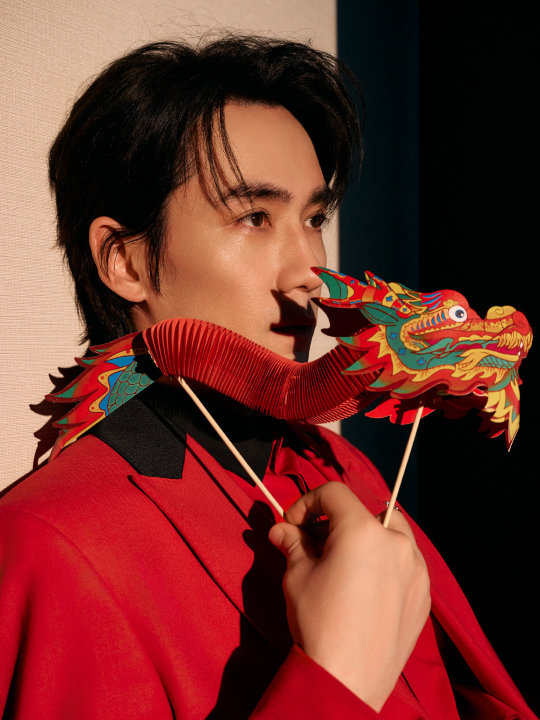

Zhu YiLóng 朱一龍
ZYL Studio Wb updates 2024.02.10


Happy Year of the Lóng 🐉



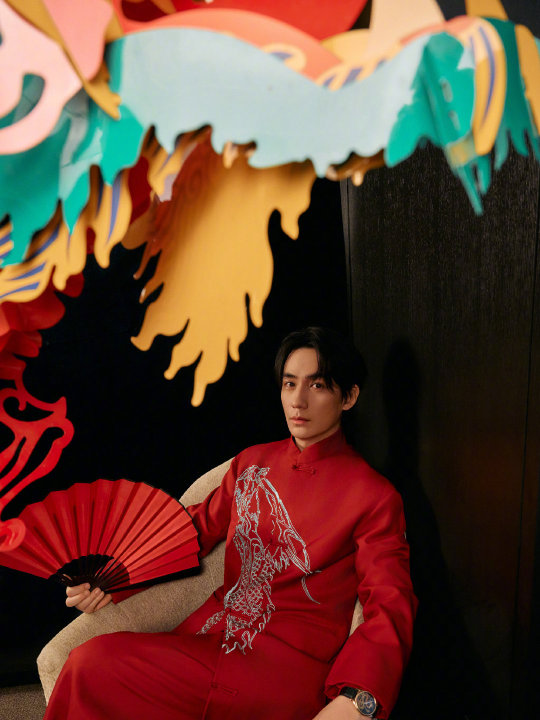
#year of the dragon#happy lunar new year#zhu yilong#reunion the sound of the providence#the rebel#to dear myself#guardian#the story of minglan#only the river flows#lighting up the stars#lost in the stars#cloudy mountain#embrace again#cdrama#cmovie#chinese actors#dmbj cast#the lost tomb cast#the lost tomb reboot
12 notes
·
View notes
Text



Zhu YiLóng 朱一龍
Little tour in Annecy, Geneva and around the lake. (1/3)




ZYL Studio Wb updates 2024.04.15,16
04.16 Happy birthday!!!
ZYL: look at that thing in the shop! The design is interesting! Oops! It's only the reflection of that pipe/(fire hydrant?) in the street 😅
I wanna put him in my pocket with QíQí!!! (And feed them crêpes)
#zhu yilong#chinese actors#dmbj cast#the lost tomb cast#reunion the sound of the providence#the rebel#to dear myself#guardian#the story of minglan#only the river flows#lost in the stars#lighting up the stars#cdrama
10 notes
·
View notes